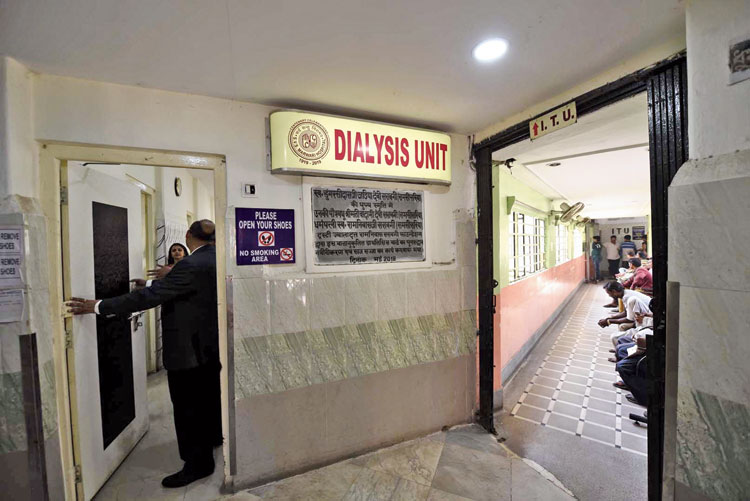A red brick hospital that came up in response to ill treatment of Indians by the British in government hospitals completed 100 years on Friday.
What started as a 50-bed hospital on Amherst Street for Marwaris is now a 150-bed facility with a 20-bed intensive care unit that caters to everyone.
Shree Vishudhanand Saraswati (SVS) Marwari Hospital has almost all departments except cardiology and neurosurgery. The hospital has added a multipurpose auditorium and upgraded some departments to mark its 100th year.
The charitable hospital that runs on donations and treats patients at a nominal cost had been built by five Marwari businessmen who had taken exception to the way Indians were treated by English doctors at government hospitals in the city, hospital president Dinesh Kumar Seksaria said.
“In those days, most doctors were Englishmen and Anglo-Indians and the way they behaved with Indian patients left a lot to be desired. That is why this hospital came up and the structure was made as imposing as government hospitals and offices to send across a message to the British,” Seskaria said.
“We heard from our fathers and grandfathers that the entire set-up in government hospitals would be against Indians. A sahib would get preference even if you were in a queue… you could be pushed aside.”
Ramjidas Bajoria, Juharmal Khemka, Rameshwarlal Dudhwewala, Kesoram Pochar and Chimanlal Ganeriwala started collecting money from Marwaris in Calcutta in 1912. The land was bought the same year. The hospital was inaugurated on February 15, 1919.
Treatment at the hospital was only for Marwaris and it was free. Later it was opened to all and a nominal fee charged because some people were found misusing the facilities.

Inside the hospital Picture by Sanjoy Chattopadhyaya
The hospital is managed by a board of trustees and has always run on donations from the community, Seskaria said. The money for the upgrade and the new eye department came from donations.
On Friday a new auditorium with a seating capacity of 200 was inaugurated at the hospital. The pathology and eye departments, which were in dilapidated buildings, were given space in a renovated section of the old OPD building.
Both departments would get new equipment.
In the new set-up, the pathology department will have a fully automated bio-chemistry analyser in place of a semi-automatic analyser, an advanced 6-part-haematology analyser and a bed for small procedures, department head Minakshi Karmakar said.
There will be a histopathology set-up for biopsies that was not available till now, she said.
Biometry equipment are being added to the eye department and an unit for spectacles has been added, Rathin Brajabasi, the hospital’s medical superintendent said.
Women and child development and social welfare minister Sashi Panja and two councillors were present at a programme in the auditorium on Friday to mark the hospital’s 100 years.











